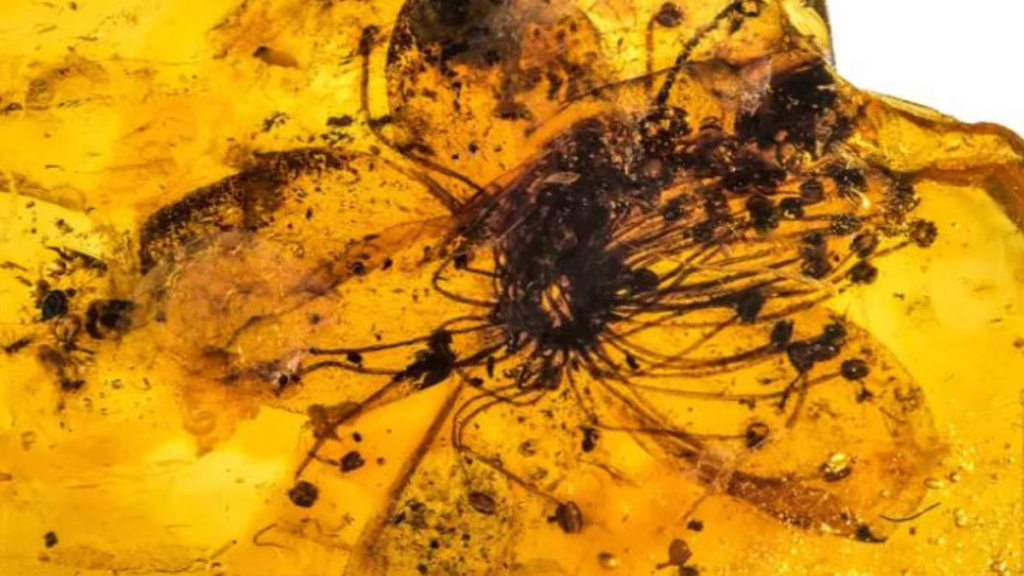!The largest fossil flower preserved itself inside amber stone more than 33 million years ago

Scientists in Germany have corrected misinformation about the largest fossil flower found preserved inside amber, with petals 28 mm long, which is three times the size of specimens found to date. Scientists believe that this flower lived more than 33.9 million years ago, in the Baltic forests.
Scientists first studied the fossil flower in 1872, when they concluded that the flower belonged to an ancient extinct evergreen plant of the species Stewartia kowalewskii.
But researchers Eva Maria Sadowski and Christa Charlotte Hoffmann, from the Museum of Natural History in Berlin, decided to take out the flower and study it again out of curiosity. Of course, the tools that scientists have in 2023 are much more advanced than those that were available to their colleagues in the eighteenth century, and this led to new results that are completely different from the previous ones and more accurate than them.
The two researchers succeeded in extracting some pollen grains from the fossil flower and analyzing the sample, and the results showed that the flower is closely related to the Asian species of Symplocos, so they decided to give a new name to the flower and it became Symplocos kowalewskii.
The research expanded to include the answer to the question of how that flower remained trapped in the amber and preserved itself, and they concluded that it was possible that the large flow of resin was the reason for preserving it and preserving the organic materials confined in the amber, which caused its protection from diseases.
The discovery of this fossil flower is not the first of its kind. Last year, researchers in China discovered the oldest fossil of a flower bud, and later a study confirmed that some fossil flowers are more than 150 million years old.
In this regard, Professor Byron Lamont, an evolutionary ecologist at Curtin University, says it is important to know how long these flowers have been on the ground and in what conditions they originated.
The importance of correcting the error about this flower stems from scientists trying to understand more about the planet, how it began and how it continued, why some species became extinct and others maintained their existence. In the answers to these questions, perhaps the essence of saving humans lies one day.
Source : websites

